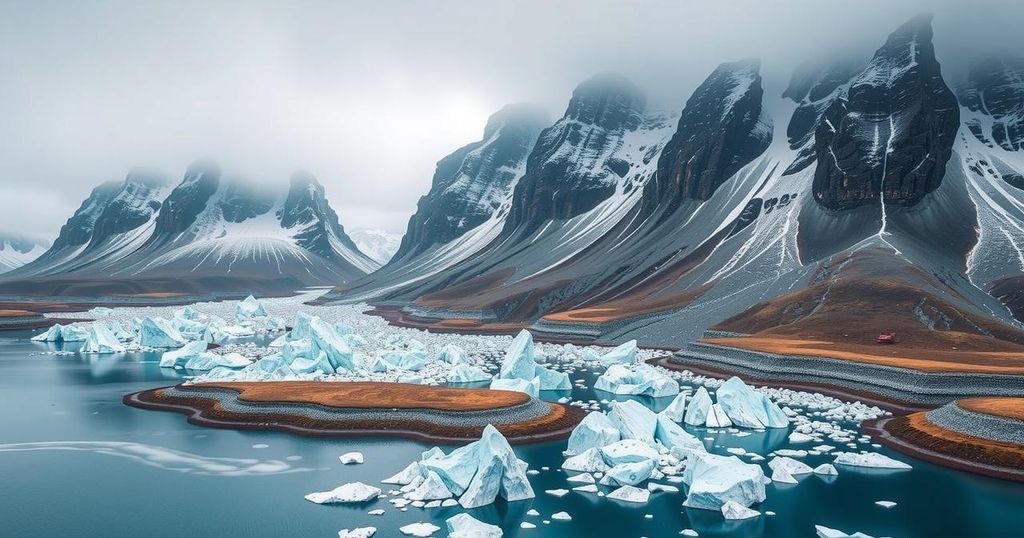Greenland is crucial in climate dynamics, affecting global weather and sea levels. It is rich in valuable resources and of geopolitical interest. The island’s accelerated ice melt presents both environmental and economic challenges, highlighting its strategic importance in ongoing global conversations about climate change and resource management.
Greenland, often perceived as a remote and icy terrain, holds a significant influence on global weather patterns and climate change. The island’s changing environment intersects with geopolitics, economy, and trade, marking it as a crucial area in the evolving discussion of climate issues. Professor Geoff Dabelko from Ohio University emphasizes the island’s geopolitical relevance, asserting that it now plays a central role in international competition, especially relating to climate change.
The growing interest in Greenland stems from its immense natural resources. According to climate scientist David Holland, it serves as a “refrigerator door for a warming world,” warming at a rate four times faster than the global average. Valuable minerals, including rare earth metals and fossil fuels, are now becoming accessible due to the melting ice, with the potential for substantial economic impact, particularly as reliance on China for these resources persists.
The melting ice of Greenland is of paramount concern. A staggering volume of approximately 24 feet of potential sea level rise lurks within its ice, and the phenomenon of “zombie ice,” which is already destined to melt, exacerbates the situation. Notably, recent studies indicate that Greenland has been losing around 182 billion tons of ice annually, with figures peaking to 489 billion tons in 2019. This continuous loss of ice threatens to reshape coastlines and disrupt weather patterns globally.
Moreover, Greenland’s geographical positioning is strategically valuable, lying at the intersection of major powers, including the United States and Russia. It is crucial for the Atlantic Meridional Overturning Circulation (AMOC), a vital ocean current that drastically influences climate behavior in Europe and North America. Disruption of this current due to increased freshwater from melting ice could lead to severe weather changes and agricultural impacts.
As the world grapples with climate challenges, Greenland embodies the complexities and urgent priorities of our environmental future, serving as both a valuable resource and a litmus test for climate action. The island remains a beautiful yet haunting reminder of the fragility of our planet and the pressing need for stewardship.
Greenland’s significance is underscored by its role in climate change dynamics and its rich natural resources. As the climate crisis unfolds, the effects observed in Greenland—such as rapid ice melt—transcend local implications, affecting global weather and sea level patterns. Furthermore, geopolitical interests in the region have heightened awareness of its strategic importance amid evolving trade routes and resource competition, especially in the context of shifting alliances and global dependencies. The conversation around Greenland encompasses environmental, economic, and geopolitical dimensions, illuminating the interconnectivity of contemporary global challenges.
In summation, Greenland is not merely a remote island; it serves as a microcosm of the climate crisis, resource competition, and geopolitical tension. The accelerated melting of its ice is driving significant changes in global weather patterns and raising alarms regarding rising sea levels. Its vast natural resources position it as a focal point in international competition, while its pivotal role in oceanic currents underlines the interconnectedness of climate systems. As the world continues to confront these complexities, Greenland’s fate will resonate far beyond its shores.
Original Source: www.mprnews.org






